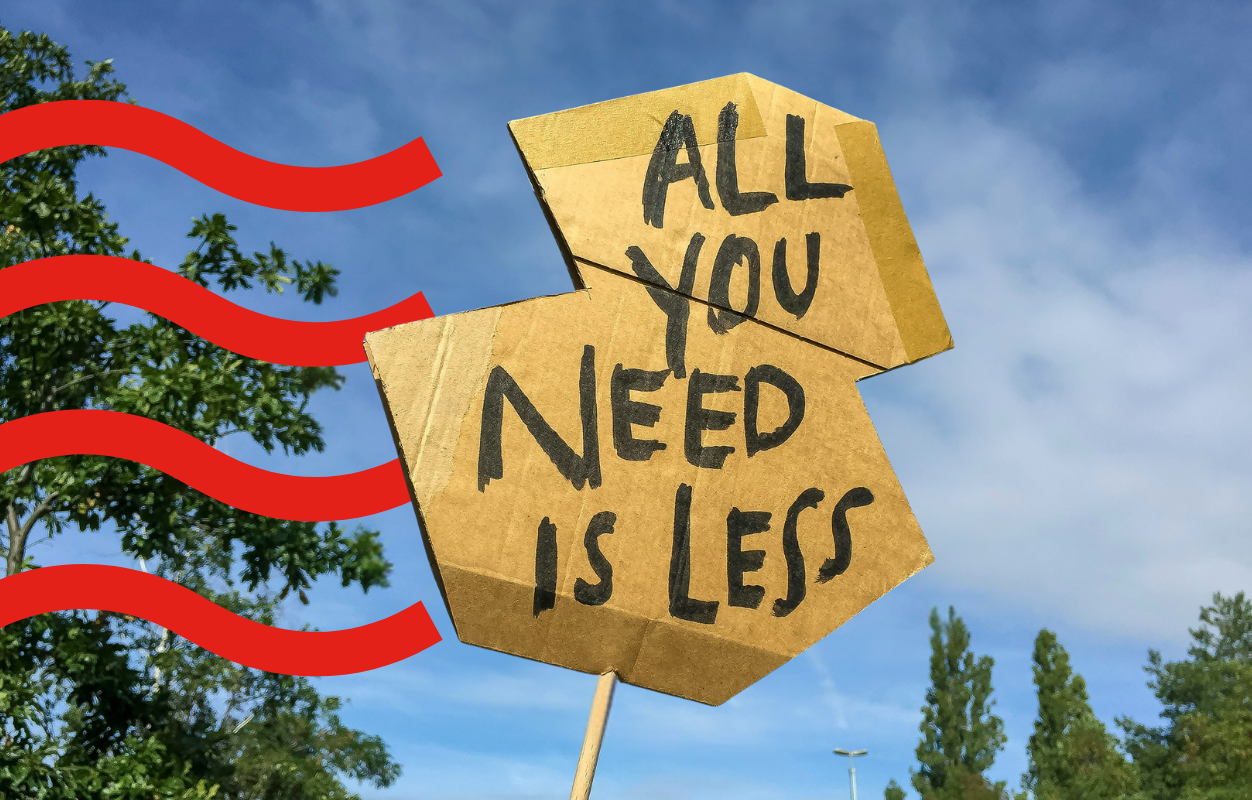Why reduction matters: the key to sustainability

Sustainable Mail and the reduction of resources and carbon emissions.
For mail, carbon emissions can be reduced by using renewable energy to power deliveries (e.g. electric vans) or reducing the amounts of ink and paper in production.
There are many small reductions one can make to lower the carbon footprint of mail without compromising on effectiveness and creativity. This could be removing non-biodegradable glues, plastic windows on envelopes and much more.
Any organisation can make reductions in mail. Learn more about mail sustainability here.
But where reduction might be relatively simple in mail, it becomes more complex and academic when changes within the whole system rely on political will, legislation and sector-wide change
At Royal Mail, we're building on the green benefits of our 'feet on the street' model and reducing our emissions by transitioning 100% of our delivery fleet to electric vehicles by 2035. Matt Gower, Head of ESG.

Radically sustainable. Getting uncomfortable with real reduction
‘Reduction’ is the most critical part of the circular journey but one that makes many feel uncomfortable. Our economies are driven by the idea of infinite growth and so naturally ‘reduction’ feels an anathema to that idea.
The academics behind degrowth1 and doughnut economics2 often emphasise to business and policy leaders the importance of reducing what we produce and consume.
They are leading ideas on how to meaningfully reduce the vast resources that we exploit on a finite planet. But they rely on systems change and promote ideas that are quite a radical departure from the society of today. Yet, much of the thinking is worth considering, if only just to better understand circularity.
Degrowth definition: a policy of reducing levels of production and consumption within an economy to conserve natural resources and minimise environmental damage.3
Doughnut Economics definition
The Doughnut consists of two concentric rings: a social foundation, to ensure that no one is left falling short on life’s essentials, and an ecological ceiling, to ensure that humanity does not collectively overshoot the planetary boundaries4 that protect Earth's life-supporting systems.
This model relies on a regenerative and distributive economy and significant reductions in extracting from nature and harmful production that pollutes.

The Planetary Boundaries. The Stockholm Resilience Centre.

Doughnut Economics. Kate Raworth.

Albert Klein / Unsplash
Sustainable reduction philosophy
‘Reduction’ as a business philosophy demands quite a different view of the world to the one, we find ourselves in. High-income economies are mainly responsible for this problem and consume energy and materials at an unsustainable rate.

A global economy structured around growth is driving climate breakdown and species extinction. And absolute reductions in energy and material use are unlikely to come through technological progress: the more technologically advanced and efficient an economy becomes, the more resources it consumes because resources get cheaper (Jevons Paradox6).
Jevons paradox is the economic phenomenon where technological advancements that increase efficiency in resource use can lead to an overall increase in the total consumption of that resource.
Only an approach to abandon growth, scale down destructive forms of production, and reduce energy/material use enables effective decarbonisation and halts ecological loss. This might sound radical, but we all know that we need to transition from fossil fuels, alongside sustainable changes in mass-produced meat/dairy, fast fashion, and aviation.
These changes can be supported by governments, who stop subsidies for fossil-fuel extraction and tax ecologically damaging industries. Companies can also end planned obsolescence of products and be more mindful of every component that goes into what we produce.
Much of what companies produce can be redesigned with reduction in mind and indeed what powers their production can reduce its dependence on fuels that pollute and emit carbon. This serves all of us and critically the next generation. It builds out hope that we can live with less pollution and waste.
Of course, massive reductions need to be done with care.
We obviously can’t just immediately turn off the taps to gas and oil. And critically reducing the production and consumption of resources is not all down to sectors in mining, manufacturing, agribusiness and fossil fuels. Mail proves that we can be creative and effective while reducing resources and emissions.

Reductions for more sustainable living.
The reduction philosophy touches on all aspects of life. The brilliance of many ideas around reduction is it takes a holistic view of life.
Many academics have looked at reductions in worktime, private transport, excessive buying behaviours etc. For example, trials7 of shorter working hours have generally reported positive outcomes. These include less stress and burnout and better sleep among employees while maintaining productivity. In the UK, all 17 businesses in six-month pilot8 decided to continue with either four-day week or nine-day fortnight.
Many thinkers have considered global scenarios9 in the provision of better working lives. The ideas include high-quality, low-energy housing, widespread public transport, diets low in animal-based foods, material thresholds and economic equality. Further, living well with less can be an antidote to developed societies overwhelmed by always-on news cycles, social media, and over-consumption.
Reduction though isn’t then just about harking back to a time when our lives were slower, smaller and less advanced but applying radical ideas to entrenched problems and fixing harms we’ve created as we’ve modernised society.
Something for us all to think about?
We can all think about what the inputs are to what we make and how much we ultimately consume.
For mail, there are many different stakeholders and suppliers that can reduce resource use and find ways to transition away from processes that create waste and pollution. It is not just inks and paper but logistics, offices, and services. Can the use of plastics be reduced or non-biodegradable inks?
Our world’s resources are finite, so we need to consider reducing the excess, transitioning away from harmful processes and minimising waste.
—
Marketreach has resources available for brands to better understand how mail can be an effective and sustainable choice within their marketing mix, and to help them produce more sustainable direct mail campaigns.
The print sustainability body ‘Print Green’.10 ‘Print Green’ also has a whole host of guidance, tools and education to help brands and agencies design campaigns with circularity in mind.
- https://www.jstor.org/stable/j.ctv5cg82g
- https://doughnuteconomics.org/about-doughnut-economics
- https://degrowth.info/degrowth
- https://www.stockholmresilience.org/research/planetary-boundaries.html
- https://doughnuteconomics.org/about-doughnut-economics
- https://www.greenchoices.org/news/blog-posts/the-jevons-paradox-when-efficiency-leads-to-increased-consumption
- https://autonomy.work/wp-content/uploads/2021/06/ICELAND_4DW.pdf
- https://www.theguardian.com/business/2025/jul/03/nearly-1000-britons-adopt-permanently-shorter-working-week-after-trial
- https://www.sciencedirect.com/science/article/pii/S0959378020307512
- https://printgreen.org/
Surprising Sustainability: Mail starts life as a regenerative crop
https://www.marketreach.co.uk/blog/mail-starts-life-as-a-regenerative-crop
Learning to Swim: Recycling and Reuse
https://www.marketreach.co.uk/blog/learning-swim-recycling-and-reuse
Reinvention as a gateway to sustainability
https://www.marketreach.co.uk/blog/reinvention-gateway-sustainability
Degrowth Economics
https://www.jstor.org/stable/j.ctv5cg82g
Doughnut Economics
https://doughnuteconomics.org/about-doughnut-economics
Climate action plans for business
https://www.carbontrust.com/





